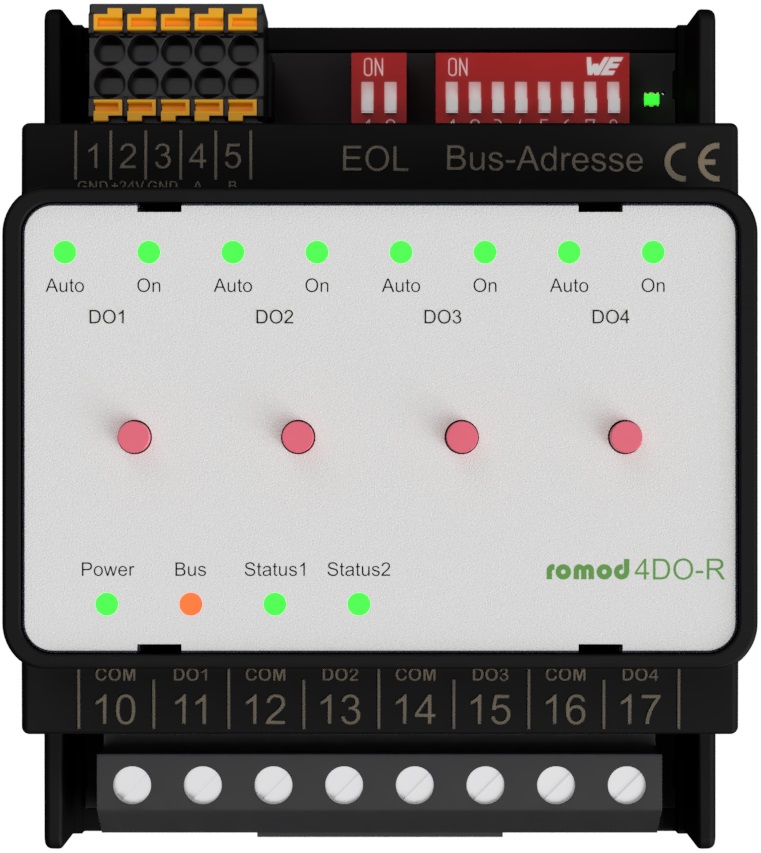romod 4DO-R- 4DO-R Railmodul
8x LED DO-status, 4x A-0-H, 230V/16A
The digital output module romod 4 DO-R is a Local Override/Indication Device (LO/ID) which is used to control four lighting circuits, or other digital actuators. By means of the integrated push buttons, it provides the ability of manual override of the DOs which are usually controlled via Modbus commands. The relay outputs provide the normally open contact of each relay and will be contacted via terminals. They are implemented using bistable relays. For each DO there are two LEDs present for indicating the status. The left LED signalizes whether the output is controlled via Modbus commands or wether it is manually overridden by the push button, whereas the right LED indicates the output's state (ON or OFF). Changing between the modes 'Automatic' and 'Manual' is done by holding down the push button. The time required for this can be set together for all four channels. If a button is pressed for a too short time, the left LED ('Automatic') flashes orange for one single time shortly after releasing the button. There is a register available that shows whether and which push button has been pressed since the last time this register has been read. When reading this register, all bits will be reset to zero. The current state of the push buttons and the outputs as well can also be read out via registers. Furthermore, via a register there can be configured whether the outputs shall start in automatic mode or manually overridden (OFF). In addition, a delay time can be defined, which must elapse between the switching of two outputs at least. Thus, the system perturbations resulting from the switching operations can be reduced. All digital outputs can be configured so that they will assume a defined state ('safe state') if the module has not received valid bus telegrams via the Modbus for a certain time. These predefined states are set separately for each output, whereas the time until activating the safe state is common for all outputs of a module. Note: The time for triggering the 'safe state' should not be too short in order to avoid malfunctions as they can occur, e.g., when another device which is connected to the bus fails and will so cause time-outs. Regarding the system configuration (addressing, maximum number of modules connected to a Modbus Master interface, installation, connection to the bus etc.), please follow the instructions in the chapter Configuration.
|
Datasheets |



